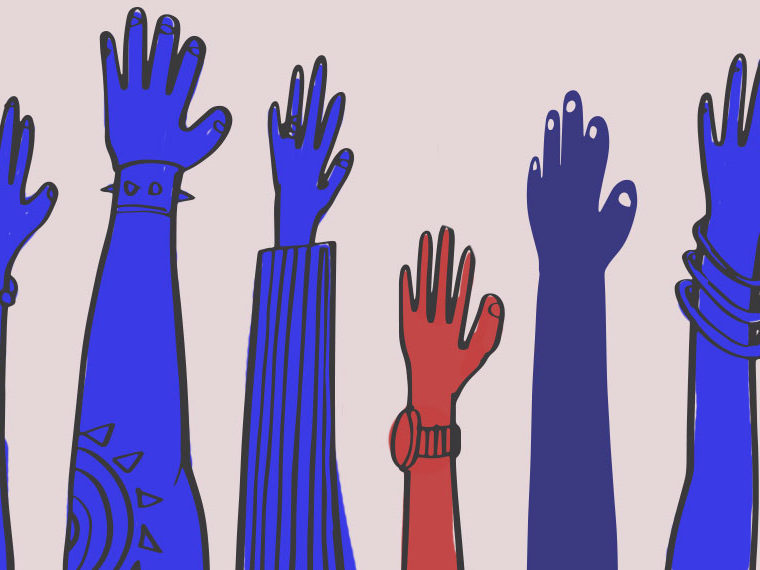Research shows that people have a sincere desire to see projects take flight
Entrepreneurs too small or green to appeal to banks or angel investors have found a robust capital pipeline in online crowdfunding platforms. Since its 2009 launch, Kickstarter.com, a leading crowdfunding site, has helped budding entrepreneurs raise more than $3 billion to launch nearly 140,000 projects.
With two-thirds of capital requests under $10,000, crowdfunders aren’t operating with a venture capitalist’s eye on a unicorn-sized return on investment, or an equity stake.
A primary motivation for crowdfunders is, seemingly, the straightforward expectation of getting something of value in return. With two caveats: First, backers essentially agree to prepay for a product or service that they may not receive for months, or longer. If ever. Second, an all-or-nothing crowdfunding platform like Kickstarter requires a project to state a funding goal; if the project does not reach 100 percent funding, the entrepreneur does not receive any money, and the potential backers get their pledged money returned, having lost time and effort in choosing that project.
Opt In to the Review Monthly Email Update.
That unconventional process of pledging money and then, in the best-case scenario, having to wait weeks, months or longer to get paid back (delivery of the finished product) raises the question of what motivates backers to fund projects.
The Vicarious Thrill of Goal-Enabling
Research has established that as crowdfunding projects near their funding goals, two economically driven behavioral tics come into play. As a project attracts more backers, the herding mentality kicks in, and more backers want to join in. There is a reason this is called crowdfunding.
Also, joining a project after it is already funded mitigates risk. There’s a higher likelihood that joining the bandwagon as it meets the funding goal means you will be investing in a successful project that eventually delivers a good or service to you. In fact, many crowdfunding projects get plenty of contributions after reaching 100 percent funding, as backers can join in with no risk that their time will be wasted in funding a project that doesn’t move forward.
UCLA Anderson’s Hengchen Dai and Washington University’s (St. Louis) Dennis J. Zhang, in a working paper, unearthed another factor that has nothing to do with an economic quid pro quo: altruism.
The drive we often feel to power through when we are this close to meeting our own personal goals or to help a group we are part of reach its goal extends to wanting to help entrepreneurs reach theirs.
Stampede to the Finish
In a field study of more than 5,000 Kickstarter projects that progressed from less than 95 percent funded to more than 105 percent funded, Dai (who conducted this research while at Washington University) and Zhang focused on two windows: the time it took a project to move from 95 percent funded to 100 percent funded, compared with the time it took to move from 100 percent to 105 percent funded. They tracked a project’s funding progress in 30-minute intervals; that frequent monitoring provided a valuable granular look at how backers respond when a goal is near versus when a goal is already in the bag.
If economic theory was all that was at play, Dai and Zhang would have seen funding post-goal — when the herding instinct and guarantee of success are stronger — attract more attention than funding pre-goal.
Dai and Zhang found just the opposite.
Wanting to help entrepreneurs reach their goals seemed a stronger motivator than backing a project that was already fully funded. During the 10-month study, nearly three quarters of projects took longer to move from 100 to 105 percent funding than to get from 95 to 100 percent.
The average time to get a project from 100 percent funded to 105 percent funded took twice the number of hours needed for a project to move from 95 percent to 100 percent.
Dai and Zhang ran the data through more iterations that backed the potential impact of other reasons why funders were more eager before a project reached its goal. For instance, they controlled for the fact that entrepreneurs may devote more time and energy to updating their project page as it nears its funding goal. Or that backers who are already committed to a project may up their commenting game near the goal line to help push it to success. Even after those controls, Dai and Zhang report that, on average, projects took nearly 2.5 times as long to progress from 100 to 105 percent funded as they took to move from 95 to 100 percent.
Rooting for the Underdog Pays Off
So much for herding and the lure of knowing you are backing a winner. “We show that such altruistic motives can even outweigh economic considerations heavily emphasized by past research, at least around the time when a project reaches its goal,” report Dai and Zhang.
To further isolate the role of “prosocial” motivation for crowdfunding, Dai and Zhang conducted a survey of 123 Kickstarter funders. Participants were randomly presented with five Kickstarter project categories and asked to indicate the extent to which they would fund projects in each category just because they want to help the entrepreneur. This allows Dai and Zhang to calculate the average level of prosocial motivation each Kickstarter project category elicits among funders.
Dai and Zhang combined the survey responses they collected from Kickstarter funders with their Kickstarter data. When a project category’s prosocial urge is just average, Kickstarter projects took 2.39 times as long to move from 100 to 105 percent funding as it took projects to progress from 95 to 100 percent. When the prosocial urge increased by one standard deviation, the dynamic to help underfunded projects intensified: funding to get from 100 to 105 percent took 2.92 times as long as it took for a project to move from 95 to 100 percent.
Kickstarter does not currently enable funders to sort projects precisely based on how close they are to meeting their funding goal, and only lets backers do a rough separation of projects that are 75–100 percent completed versus projects that have collected 100 percent funding. Dai and Zhang posit this could be a missed opportunity to drive more backer engagement.
For entrepreneurs hoping to raise capital through this mechanism, Dai and Zhang’s findings suggest that appealing to funders’ altruism can be an effective marketing move. That could entail highlighting the greater good of a given project, and sharing details on how funds will be used. The research suggests that front-loading marketing dollars and effort might be more effective than waiting until you are near 95 percent. Once you get that far along, you could already have a nice tailwind of backers’ altruism to help push you across the finish line.
Featured Faculty
-
Hengchen Dai
Associate Professor of Management and Organizations and Behavioral Decision Making
About the Research
Dai, H., & Zhang, D.J. (2018). Vicarious goal pursuit outweighs herding in crowdfunding: Evidence from Kickstarter.com.





